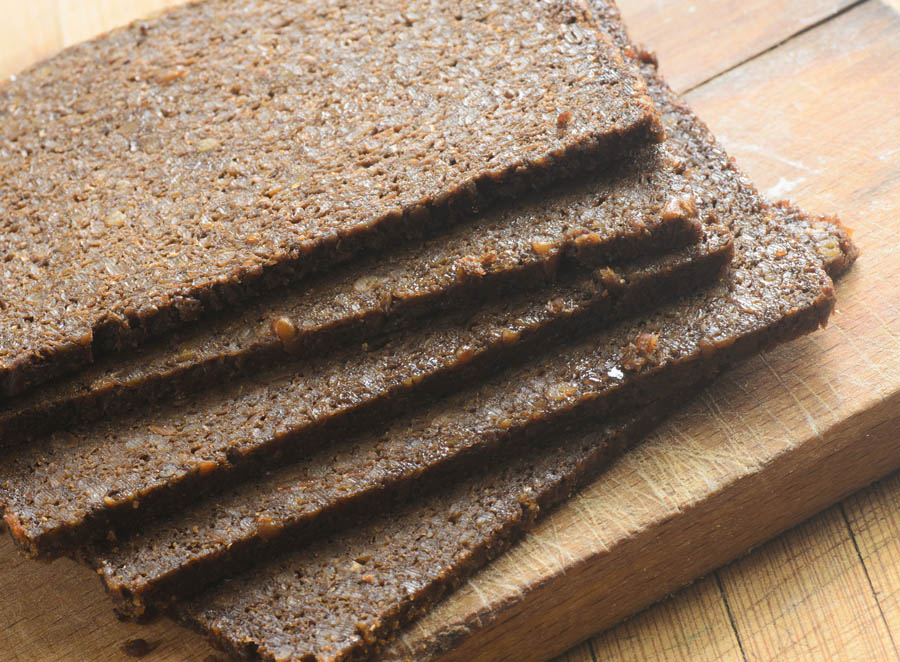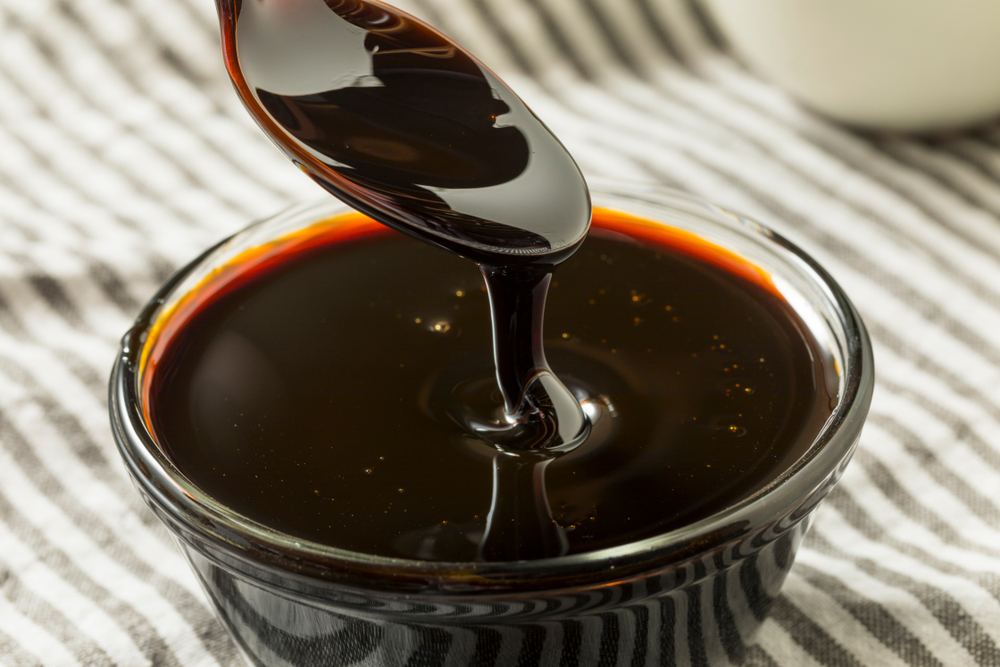Westphalian Pumpernickel
Pumpernickel is perhaps the best-known German bread, though many non-German types of pumpernickel do a disservice to the true German pumpernickel. Traditional German pumpernickel recipes call for baking the bread for 12 to 24 hours, creating a hard, rough bread that is quite polarizing—people love it or hate it. This Westphalian pumpernickel recipe involves a shorter baking time—4.5 hours—and has a significant depth of flavor. Authentic pumpernickel uses no leavening, which gives it its characteristic density and compactness.
Recipe Servings: 24
Prep Time
10 minutes
+ 24 hours resting
+ 24 hours resting
Cook Time
4 hours 45 minutes
Total Time
28 hours 55 minutes
Vegetarian
Vegan
Gluten Free
Dairy Free
Kosher
Halal
Ingredients
- 4 cups (480 g) rye flour
- 2 cups (240 g) whole-wheat flour
- 2/3 cup (40 g) bulgur wheat
- 2 tsp (10 ml) salt
- 2 Tbsp (30 ml) molasses
- 3½ cups (840 ml) warm water
- 1 Tbsp (15 ml) vegetable oil
Directions
- Lightly grease two 8 x 4-inch (20 x 10-cm) loaf pans.
- Combine rye flour, whole-wheat flour, bulgur wheat, and salt in a large bowl.
- Mix molasses and warm water together in a small bowl until well combined.
- Add molasses mixture and vegetable oil to the dry ingredients, mixing to form a dense dough.
- Divide into two equal pieces and place in the prepared tins, pressing well into the corners and sides.
- Cover with lightly-oiled plastic wrap and let rest in a warm place for 18–24 hours.
- Preheat oven to 225°F (105°C).
- Remove plastic wrap from the pans and cover tightly with aluminum foil.
- Fill a roasting pan with boiling water and place a rack on top of the roasting pan.
- Place tins on top of the rack and place carefully in the preheated oven.
- Bake loaves for 4 hours, and then increase the oven temperature to 325°F (165°C).
- Top up the water in the roasting pan if necessary, uncover the loaves, and bake for an additional 30–45 minutes, until the loaves firm and the tops are crusty.
- Remove loaves from the oven and let cool in the pans for 5 minutes.
- Remove bread from the pans and transfer to a wire rack to cool completely.
- Serve cold, very thinly sliced.
Copyright © 1993—2025 World Trade Press. All rights reserved.

 Germany
Germany 
